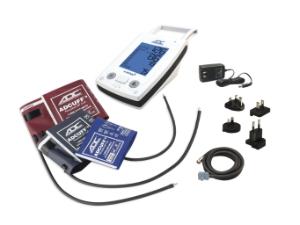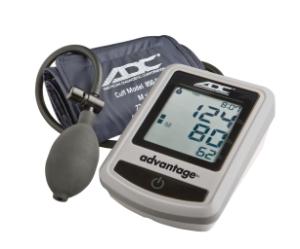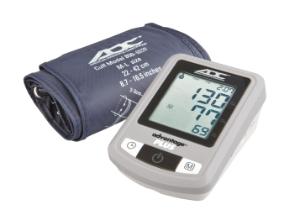Expert Tips for Measuring Blood Pressure
High School
If you’re looking for key tips and guidelines for measuring blood pressure, download the How to Take Blood Pressure article contributed by American Diagnostic Corporation. The article explains the techniques and tools that ensure accurate measurements.1
Understanding how to take blood pressure accurately involves more than just applying a cuff and a gauge; it requires a fundamental grasp of the physiological processes that govern blood pressure regulation. At the heart of blood pressure regulation is, quite literally, the heart. This muscular organ's rhythmic contractions generate the pressure needed to propel blood through the vast network of blood vessels. The strength and frequency of these contractions, influenced by various factors, play a pivotal role in determining blood pressure levels.
Veins and arteries—the body’s superhighways.
Blood vessels, particularly the arteries, are the superhighways through which blood travels. The elasticity and diameter of these vessels affect blood pressure. When arteries are flexible and dilated, blood flows more easily, leading to lower pressure. Conversely, when arteries are stiff or narrowed, the heart must work harder to pump blood, elevating blood pressure. High blood pressure can damage your health in many ways. According to the CDC, it can seriously hurt essential organs like the heart, brain, kidneys, and eyes. High blood pressure also increases the risk of heart disease and stroke, two leading causes of death for Americans.2
Blood pressure fluctuates throughout the day.
The autonomic nervous system, an often overlooked but critical player, exerts fine-tuned control over blood pressure. Operating largely beyond conscious control, this system adjusts heart rate and vessel dilation in response to various stimuli, including stress, physical activity, and environmental changes.
Blood pressure is not static; it fluctuates throughout the day and during different activities. Blood pressure typically rises during physical exertion or stressful situations as the body demands more oxygen and nutrients. On the other hand, when we’re at rest or asleep, blood pressure usually decreases. These natural variations make it essential to understand the circumstances in which blood pressure is measured.
Accurate measurement is crucial, as both high and low blood pressure readings can have significant health implications. So, ensure your students are equipped with the knowledge and skills to measure and interpret blood pressure effectively.
Check out How to Take Blood Pressure to learn about the methods and tools available for taking blood pressure, the factors that can influence readings, and guidance on achieving the most accurate measurements. The ability to take blood pressure accurately empowers your healthcare students to impact people's health outcomes positively.
1. How to Take Blood Pressure, © American Diagnostic Corporation. Used with permission. 2. Center for Disease Control (CDC): High Blood Pressure.
Recommended Products
[StartProductBlock]

ADC® e-Sphyg 3
Captures blood pressure measurements with the touch of a button. Designed for busy professionals who value both accuracy and affordability.
[EndProductBlock]
[StartProductBlock]

ADC® Advantage 6012N Semi-Auto Digital Blood Pressure Monitor
Digital monitors are a popular way for students to take readings accurately. The 6012N is a great tool for individuals to take their own blood pressure.
[EndProductBlock]
[StartProductBlock]

ADC® Advantage® Plus Blood Pressure Monitors
Measures systolic, diastolic pressure, and pulse and features a British Hypertension Society AA rating, ensuring unrivaled accuracy. The Smart Logic technology determines the ideal inflation level, providing the ultimate in simplicity.
[EndProductBlock]
